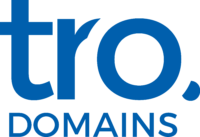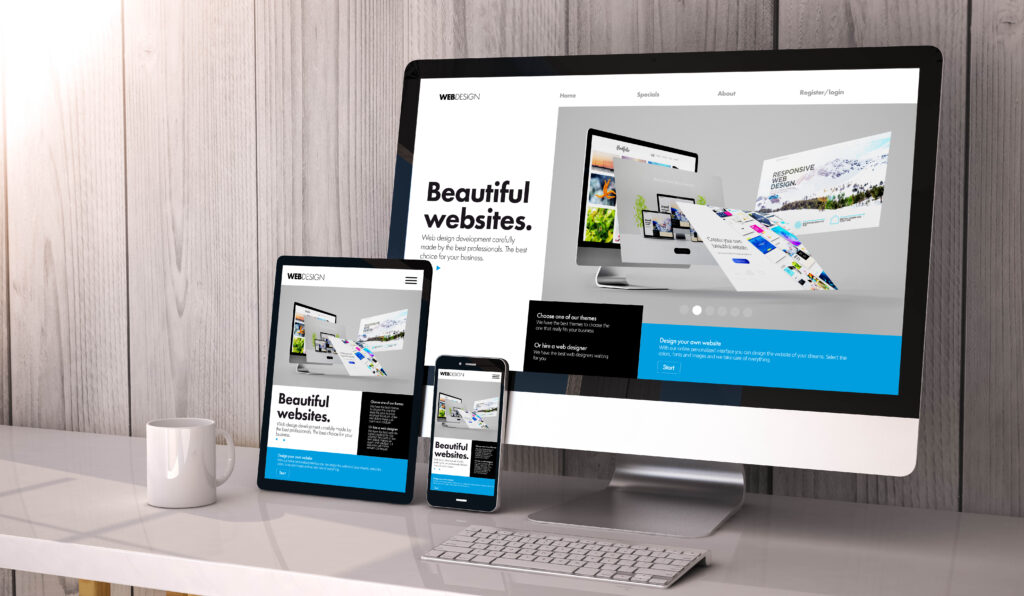Intuitive User Interface
An intuitive user interface stands out as one of the most significant attributes of a successful Website Builder. This feature allows users to engage with the platform effortlessly, facilitating the creation and management of their websites without any steep learning curves. For those who may not possess a high level of technical expertise, an intuitive interface acts as a gateway, enabling them to build professional-looking sites with ease.
A crucial aspect of an intuitive interface is its simplicity and user-centric design. Menus, buttons, and navigation paths should be logically organised and labelled in a way that makes sense to users at all levels of proficiency. The overall layout should be uncluttered, providing a straightforward path to the most frequently used features and tools. When users do not have to spend time figuring out how to use the platform, they can invest that time into making their websites more creative and functional.
Drag-and-drop functionality is another essential component of an intuitive user interface. This feature allows users to pick up elements like text boxes, images, and widgets, and place them exactly where they want them on the page. Such functionality eliminates the need for manual coding, making the process accessible to a broader audience. The ease of dragging and dropping elements can significantly accelerate the website-building process, allowing users to see immediate results as they make adjustments.
Real-time editing is a feature that complements the drag-and-drop functionality. It enables users to see the changes they make to their website instantaneously. This immediate feedback loop is invaluable for those who may not be as confident in their design choices, as it allows for quick adjustments and refinements. Seeing how the site evolves in real time can also be highly motivating, encouraging users to experiment more freely with different design elements.
Another critical feature of an intuitive user interface is its adaptability. An adaptive interface can accommodate various user preferences and levels of experience. For instance, beginner users might benefit from tooltips, guided tutorials, or wizard-based setups that walk them through the process step by step. On the other hand, more experienced users might appreciate shortcuts, advanced settings, and the ability to bypass wizards for a more direct approach.
Customisation options within the user interface are equally important. Users should be able to personalise their dashboards and toolbars, bringing the most frequently used tools and features to the forefront. This level of customisation makes the platform feel more tailored to individual needs, enhancing the overall user experience.
Additionally, responsiveness is a key attribute of a top-notch user interface. The platform should perform smoothly without lag, even when multiple features are being used simultaneously. A responsive interface minimises frustration and keeps users engaged, ensuring that they can complete their tasks efficiently.
Accessibility features should not be overlooked either. An intuitive user interface should be inclusive, providing options for users with varying abilities. This could include keyboard shortcuts for those who find mouse navigation challenging, screen reader compatibility for visually impaired users, and adjustable text sizes and colours for those with different visual needs. Inclusivity in design not only broadens the user base but also fosters a more positive and supportive community.
Lastly, the overall aesthetic of the interface contributes to its intuitiveness. A clean, visually appealing design can make the platform more inviting and less intimidating for new users. Colour schemes, font choices, and iconography should be thoughtfully selected to ensure they are both attractive and functional.
In summary, an intuitive user interface is a cornerstone of any high-quality Website Builder. It makes the platform accessible, efficient, and enjoyable to use, thereby empowering users to bring their website visions to life with minimal hassle.
Customisation Features
A crucial aspect of top-tier Website Builder is the ability to customise your website extensively. A wide range of templates is essential, offering users a foundation to start from, which they can then personalise to suit their brand identity. Flexibility in design adjustments is equally important, as it allows users to modify templates and make unique design choices without any restrictions.
Dr. Rachel Lowe, an Obesity Medicine Specialist, appreciates the flexibility that Wix offers, noting, “I can say that I admire the flexibility of design customisation in Wix.” This flexibility allows users to tailor their sites precisely to their vision. Whether you’re crafting a personal blog or a professional portfolio, the ability to customise your website ensures that your site stands out in a competitive digital landscape.
Website Builders often provide a variety of tools to facilitate customisation. These may include font libraries, colour pickers, and layout options that allow users to fine-tune every detail of their site. The inclusion of these tools means that users can make their websites truly unique, reflecting their personal or brand style.
The use of customisation features extends beyond aesthetics. Functional customisation, such as the ability to add or remove sections, incorporate third-party plugins, or modify navigation menus, plays a vital role in creating a website that not only looks good but also performs well. Such functionalities ensure that users can build a site that meets their specific needs, whether it’s for personal use, business, or e-commerce.
One of the significant benefits of customisation features is that they enable users to adapt their websites over time. As businesses grow and evolve, their websites must do the same. A website builder that allows for ongoing modifications ensures that the site remains relevant and effective. This adaptability is especially important in a fast-paced digital environment where trends and technologies are continually changing.
For those looking to make their websites more interactive, customisation features often include options for adding multimedia elements like videos, slideshows, and interactive forms. These elements can enhance user engagement and make the site more dynamic and appealing.
Another important aspect of customisation is the ability to integrate various forms of media seamlessly. Whether it’s incorporating high-resolution images, embedding videos, or adding audio files, a good Website Builder should make these tasks straightforward. The ability to easily manage and organise media files can significantly enhance the user experience, making the website more engaging and visually appealing.
For more advanced users, the option to add custom code can be a game-changer. While the drag-and-drop interface is excellent for those with limited technical skills, having the ability to input HTML, CSS, or JavaScript provides a level of control and customisation that can take a website to the next level. This feature is particularly beneficial for developers or those with some coding knowledge, allowing them to implement specific functionalities or design elements that are not available through the standard tools.
The importance of responsive design should also be noted. While an adaptive design ensures the website functions well on various devices, the ability to customise how the site looks on different screens is equally important. Users should be able to adjust layouts, fonts, and images specifically for mobile or tablet views, ensuring that the site is user-friendly across all platforms.
Finally, customisation features should include options for SEO optimisation.
Adaptive Design
Adaptive design is an essential feature for modern website builders, addressing the need for websites to function seamlessly across various devices and screen sizes. With the proliferation of smartphones, tablets, and different desktop monitors, a one-size-fits-all approach no longer suffices. Adaptive design ensures that your website dynamically adjusts its layout and content to offer an optimal viewing experience, irrespective of the device being used.
The primary advantage of adaptive design is its ability to provide a consistent and user-friendly experience. Elements like navigation menus, text, images, and buttons automatically scale and rearrange themselves to suit the screen’s dimensions. This adaptability prevents issues such as text becoming too small to read or images being improperly cropped, which can frustrate users and drive them away. In essence, adaptive design enhances usability, making your site accessible to a wider audience.
One of the standout features of adaptive design is the use of media queries in CSS (Cascading Style Sheets). Media queries enable the website to detect the screen size and apply specific styles accordingly. For instance, a three-column layout on a desktop can transform into a single-column layout on a mobile device, ensuring that content remains legible and navigable. This automatic adjustment negates the need for users to pinch and zoom, offering a more streamlined browsing experience.
Furthermore, adaptive design contributes significantly to page load times. By tailoring content delivery based on the device, unnecessary elements can be excluded from the mobile version, thereby speeding up the loading process. Faster load times are crucial for retaining visitors, as slow-loading pages often lead to higher bounce rates. Google also takes page speed into account when ranking websites, so an efficiently loading site can positively impact your search engine optimisation (SEO) efforts.
Website Builders that support adaptive design often come with pre-built templates optimised for various devices. These templates serve as a starting point, ensuring that your website looks polished and functions well, even without extensive customisation. Additionally, builders often include preview tools, allowing users to see how their site will appear on different devices before publishing. This feature provides valuable insights and helps fine-tune the design for the best user experience.
For those with coding knowledge, adaptive design also offers the flexibility to create custom breakpoints. While pre-set breakpoints cater to common screen sizes, custom breakpoints allow for more granular control over how and when design elements should adjust. This capability is particularly useful for websites with unique layout requirements or those targeting specific device types.
Another noteworthy aspect is the ability to maintain brand consistency. Adaptive design ensures that your brand’s visual identity remains intact across all platforms. Consistent use of colours, fonts, and imagery reinforces brand recognition, fostering a more cohesive and professional appearance.
Integrating adaptive design also facilitates better analytics. When your website adapts to various devices, you can gather more accurate data on user behaviour and preferences. This information can be invaluable for making informed decisions about content, layout, and marketing strategies, ultimately enhancing your site’s performance and effectiveness.
Incorporating adaptive design into your website not only meets current user expectations but also future-proofs your site against emerging devices and screen technologies. As the digital landscape continues to evolve, having a site that can effortlessly adapt ensures longevity and relevance in an ever-changing environment.
SEO Tools Integration
Effective search engine optimisation (SEO) is a cornerstone of online success, and a website builder that integrates SEO tools can provide a significant advantage. These built-in tools help users improve their site’s visibility on search engines without requiring extensive technical expertise. Among the most essential features are the capabilities to edit meta titles and descriptions, which play a crucial role in how your site is indexed and displayed in search results.
Alt text for images is another vital component, offering search engines context about the visual content on your site. This not only helps in improving the website’s accessibility but also boosts SEO by enabling search engines to better understand the relevance of your images. Structured data support is equally important, as it allows you to provide additional information to search engines in a format they can easily read, enhancing the likelihood of your site appearing in rich snippets and other enhanced search results.
Another useful feature is the ability to generate and manage XML sitemaps. These sitemaps act as a roadmap for search engines, guiding them to the most important pages on your site. Regularly updated sitemaps can improve the efficiency with which search engines crawl your site, ensuring that new or updated content is indexed more quickly.
Keyword optimisation tools are also crucial, enabling you to target specific search terms relevant to your content. These tools often come with analytics to track the performance of chosen keywords, helping you refine your strategy for better results. Some Website Builder even offer keyword suggestion tools, which can be invaluable for those unsure of the best terms to target.
Integrating social media sharing options can also positively impact your SEO efforts. When users share your content across social media platforms, it increases the likelihood of attracting backlinks, which are a critical factor in search engine ranking algorithms. Many Website Builders offer easy-to-integrate social sharing buttons, making it simple for visitors to spread your content organically.
SEO tools that offer insight into your site’s performance can be incredibly beneficial. Features like site speed analysis and mobile-friendliness checks ensure that your site meets the technical criteria favoured by search engines. Faster load times and a mobile-optimised design can significantly improve your search rankings, as these are key factors in Google’s algorithm.
Another advanced feature is the integration of Google Analytics and Search Console. These tools provide a wealth of information about how visitors interact with your site and how it performs in search engine results. Insights from these platforms can guide your ongoing SEO strategy, helping you identify which areas need improvement and which are performing well.
For those who manage multiple websites or large-scale projects, the ability to handle SEO settings on a global level can be a time-saver. This feature allows for the application of SEO settings across multiple pages or sites simultaneously, ensuring consistency and saving time on repetitive tasks.
Having a Website Builder that keeps up-to-date with the latest SEO trends and algorithm changes is invaluable. SEO is an ever-evolving field, and features that automatically update to reflect the latest best practices can help maintain your site’s competitive edge.
Incorporating these SEO tools within the Website Builder ensures that users can optimise their sites effectively, making them more likely to rank higher in search engine results and attract a larger audience.
E-commerce Functionality
A Website Builder with strong e-commerce functionality can be a game-changer for businesses looking to establish an online presence. The cornerstone of such functionality is secure payment gateways, which ensure that transactions are both safe and seamless for the business and its customers. These gateways support a range of payment options, including credit cards, digital wallets, and even bank transfers, catering to diverse customer preferences and enhancing the overall shopping experience.
Inventory and order management features are equally critical. These tools allow businesses to track stock levels in real time, preventing situations where customers order items that are out of stock. Efficient order management systems help businesses process and fulfil orders promptly, keeping customers informed at every stage of their purchase journey. Features like automated email notifications for order confirmations and shipping updates can further enhance customer satisfaction.
For those looking to expand their online sales, integration with popular e-commerce platforms can be invaluable. Shopify, for instance, is frequently cited as a top choice for e-commerce Website Builders due to its comprehensive suite of tools tailored for businesses focused on online sales. Shopify’s capabilities make it an ideal choice for those aiming to establish or expand their online storefronts.
A key aspect of e-commerce functionality is the ability to create a visually appealing and user-friendly online store. Customisable templates designed specifically for e-commerce can provide a professional look and feel, while also being adaptable to match a brand’s unique identity. Features like product galleries, zoomable images, and customer reviews contribute to a richer shopping experience, making it easier for customers to make informed purchasing decisions.
Marketing tools are another essential component of e-commerce functionality. These tools often include options for creating discount codes, gift cards, and promotional campaigns, which can drive sales and attract new customers. Email marketing integrations can help businesses stay in touch with their customer base, sending out newsletters, product updates, and special offers to keep them engaged.
Shipping solutions integrated into the website builder can streamline the logistics of delivering products to customers. These solutions often provide options for real-time shipping rates, label printing, and tracking numbers, simplifying the shipping process for both the business and its customers. The ability to set different shipping rates based on location, weight, or order total offers further flexibility and control.
Additionally, customer relationship management (CRM) features can help businesses maintain strong connections with their clientele. These features may include customer segmentation, purchase history tracking, and personalised communication options, enabling businesses to tailor their marketing and customer service efforts more effectively.
Dependable Customer Support
Dependable customer support is indispensable when selecting a Website Builder, particularly for users who may face challenges while creating or managing their site. The leading platforms provide around-the-clock assistance, ensuring that support is available whenever required. This support can be accessed via multiple channels such as live chat, email, or phone, accommodating various user preferences and the urgency of their needs.
High-quality customer support goes beyond just availability; it also includes knowledgeable and responsive representatives who can offer swift resolutions to issues. Having a team that is well-versed in the platform’s features and common troubleshooting methods can save users significant time and frustration.
In addition to direct support, comprehensive self-help resources are invaluable. These resources often include detailed tutorials, step-by-step guides, and extensive FAQs, empowering users to find solutions independently. Community forums can also be an excellent resource, providing a space where users can share experiences, ask questions, and receive advice from fellow users and experts alike. Such forums foster a sense of community and can offer insights that are not always covered in official documentation.
Webinars and training sessions are another beneficial aspect of dependable customer support. These sessions often delve deeper into the platform’s capabilities, offering advanced tips and tricks that can help users maximise the potential of the Website Builder. Recorded sessions or on-demand webinars ensure that users can access this valuable information at their convenience.
Multi-lingual support is an important consideration for global users. Platforms that offer assistance in multiple languages make it easier for non-native English speakers to receive help in a language they are comfortable with, enhancing their overall user experience.
Furthermore, proactive support measures can make a significant difference. Regular updates from the support team about new features, maintenance schedules, and potential issues can help users stay informed and prepared. This level of communication demonstrates a commitment to user satisfaction and helps build trust in the platform.
Ultimately, dependable customer support enhances the overall usability of a Website Builder, making it more approachable for users of all skill levels. By providing timely assistance and a wealth of self-help resources, the platform ensures that users can focus on their primary goal: creating and maintaining a successful website.



